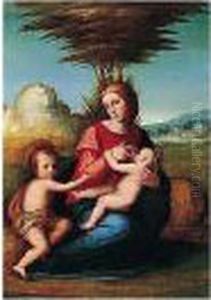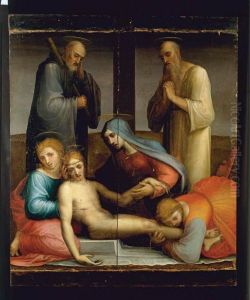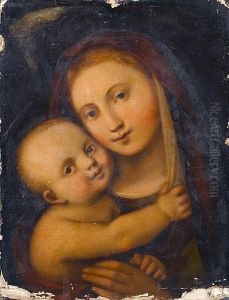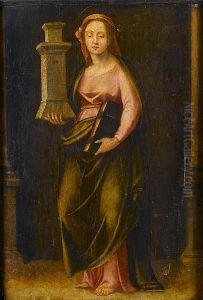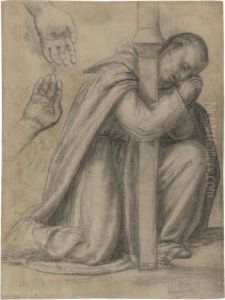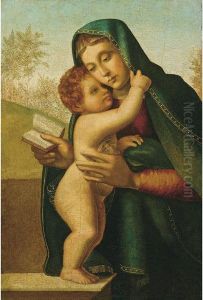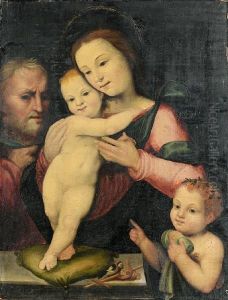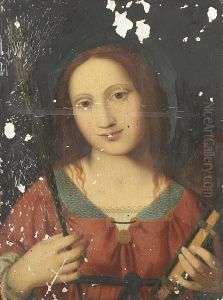Fra Paolino Da Pistoia Paintings
Fra Paolino da Pistoia, born Paolo Uccello in 1488 in Pistoia, Italy, was a distinguished Italian painter of the High Renaissance. Not to be confused with Paolo Uccello, another prominent Renaissance artist, Fra Paolino took his name upon entering the Dominican order, reflecting his commitment both to his faith and to his art. His religious vocation deeply influenced his artistic output, which consisted primarily of religious subjects, including altarpieces, frescoes, and smaller devotional paintings, imbued with the spiritual fervor and artistic innovations characteristic of the period.
Fra Paolino initially trained in Florence, where he was influenced by the works of Fra Bartolomeo, another Dominican friar and artist, and Raphael, one of the foremost painters of the era. This training provided him with a mastery of the emerging Renaissance techniques, including the use of perspective, a heightened realism, and a harmonious use of color. His work is notable for its serene and devout figures, set against landscapes or architectural backdrops rendered with meticulous detail.
Throughout his career, Fra Paolino remained closely associated with the Dominican order, executing commissions for various religious institutions. His work was appreciated for its devotional intensity and its adherence to the principles of the High Renaissance, which sought to harmonize the ideals of beauty, proportion, and naturalism with religious themes. Despite the fame he garnered during his lifetime, Fra Paolino's legacy was somewhat overshadowed by that of his contemporaries, and many of his works were later attributed to other artists.
Fra Paolino da Pistoia passed away in 1547 in Pistoia. Today, his surviving paintings are recognized for their contribution to the religious art of the Renaissance and are held in various museums and churches, primarily in Italy. His oeuvre provides valuable insight into the religious and artistic milieu of his time, reflecting both the deeply spiritual orientation of the Dominican order and the broader cultural renaissance that was transforming Italy and Europe.
